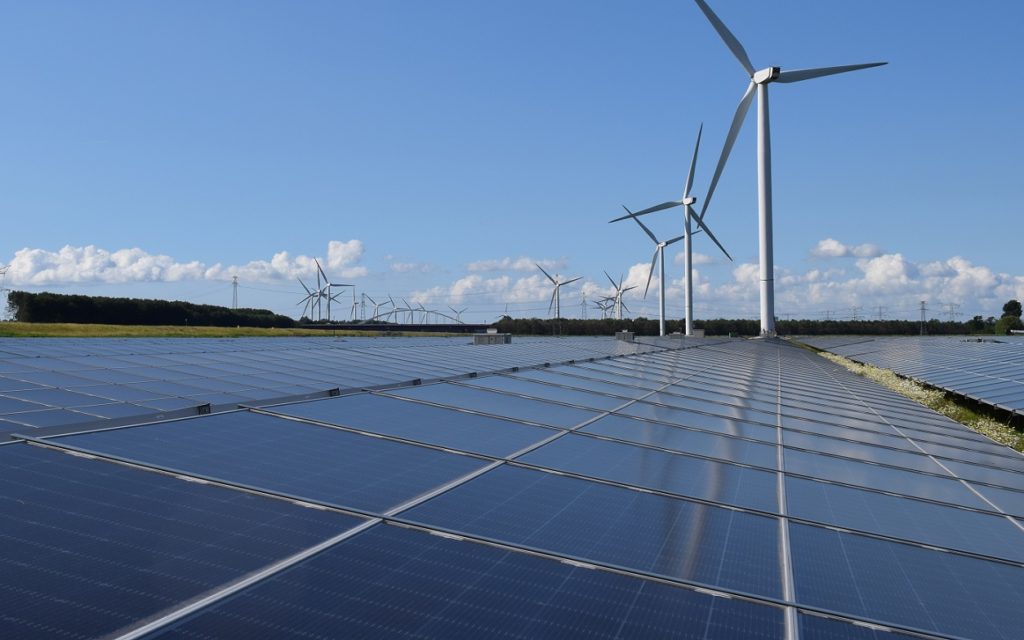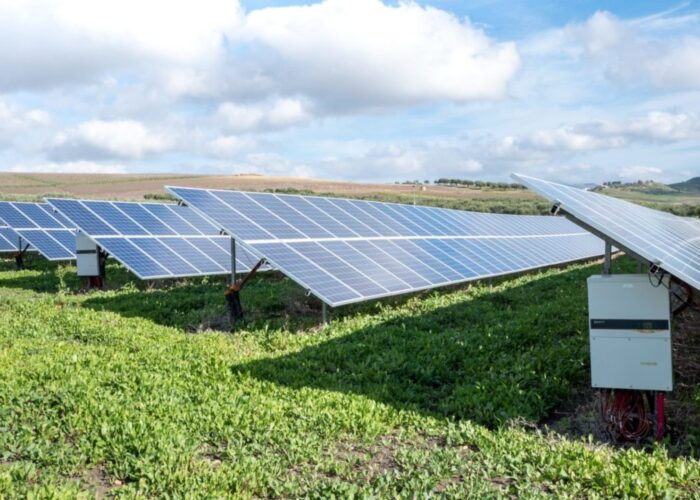
The Netherlands is one of Europe’s major solar markets, according to trade body SolarPower Europe’s report European Market Outlook for Solar Power 2023-2027. The Netherlands installed 22.5GW of solar as of 2023, only behind Germany, Italy and Spain.
In its updated national energy and climate plans (NECP), the Netherlands’ planned solar capacity is expected to reach 25.7GW by 2030, down from 27GW in the previous NECP, and the only EU country to revise down its solar target. By 2040, the country expects to have an installed solar capacity of 42.6GW. With the decreased target by 2030, the country is expected to achieve that goal by the end of this year rather than 2030.
Unlock unlimited access for 12 whole months of distinctive global analysis
Photovoltaics International is now included.
- Regular insight and analysis of the industry’s biggest developments
- In-depth interviews with the industry’s leading figures
- Unlimited digital access to the PV Tech Power journal catalogue
- Unlimited digital access to the Photovoltaics International journal catalogue
- Access to more than 1,000 technical papers
- Discounts on Solar Media’s portfolio of events, in-person and virtual
In February, the Dutch Senate rejected a bill proposing to phase out a net metering scheme that would come into force from January 2025, while the Netherlands also launched a new subsidy aimed at supporting domestic manufacturing of solar panels, batteries and electrolysers. Both of these could have a significant impact on the Dutch solar industry.
PV Tech Premium talks to analysts about the Dutch solar market and what can be expected from these recent events.
The phase-out of existing net metering scheme
In February, the Dutch Senate rejected a proposal from the Dutch government to phase out an existing net metering scheme. If the Dutch Senate had approved the proposal, the phase-out of the scheme would have come into force from January 2025.
The bill planned to gradually phase out the scheme from 1 January 2025 to 1 January 2031. If it had been approved, the bill would have meant the input from small consumers would no longer be offset against their purchase of electricity from the grid starting from January 2025. Instead, only part of the electricity fed into a grid may be offset against the purchase from that grid via the same connection. This percentage of compensation will be gradually reduced to zero until 1 January 2031.
The net metering scheme was introduced as an incentive to enable the public to generate electricity and feed unused power to the grid. Energy suppliers would compensate customers if they return more electricity than they consume. The Dutch government said customers would be more likely to buy “relatively expensive” solar modules with compensation as it could help them recoup investment.
To make up for increased expenditure to customers who sell power, energy suppliers increased the electricity rate for everyone throughout the year, so people who do not have solar modules also indirectly contribute to the scheme.
The Dutch government hoped to phase out the scheme as Climate and Energy Policy Minister Rob Jetten said the scheme was “outdated, expensive and an unjust redistribution”.
Increased grid congestion
According to observers, the bill’s rejection could further clog the Netherlands’ already congested grid. Trade group Holland Solar said that 2.6 million solar module owners in the Netherlands currently use an average of 30-40% of the electricity generated themselves, with the rest being fed into the grid, which could become overloaded during peak times.
“The rejection by the Senate to phase-out the net-metering scheme for residential solar PV is indeed expected to exacerbate growing grid congestion in the country,” explains Victor Signes, senior analyst at Rystad Energy.
In response to the growing grid congestion, some Dutch energy providers, such as Vandebron or Budget Energie, have already started charging prosumers a fee for feeding rooftop-produced power to the grid.
Juan Monge, principal analyst of distributed solar for Europe at Wood Mackenzie, says the rejection will continue to limit critical distributed storage growth in a market that “desperately needs this technology”.
The Netherlands’ Environmental Planning Agency noticed the seriousness of the lack of grid capacity. In its Environmental Planning Agency, the Netherlands suggested that grid expansion will not be able to keep pace with new user requests and the grid congestion issues will not be solved before 2030.
However, maintaining the net metering scheme has several positive aspects. For example, it will continue to encourage the development of residential rooftop solar PV.
“While the proposed phase-out had slowed down installations, the rejection could lead to more installations in the coming months and years as the installation yield is guaranteed in the medium term. The residential rooftop market remains very volatile and sensitive to policy changes; such long-term support will provide visibility to the wider industry,” Signes says.
According to Signes, the Netherlands aims to reach over 25GWdc of solar PV installed capacity by 2030, and the incentive will help it achieve this ambition.
Subsidy for manufacturing modules and batteries
Aside from the proposed phasing out of the net metering scheme, the Netherlands launched a new subsidy in February aimed at supporting domestic manufacturing of solar panels, batteries and electrolysers, reducing the Netherlands’ dependence on other countries to procure these components.
The subsidy will support technologies including heterojunction (HJT), perovskite and building-integrated photovoltaics (BIPV).
Signes says HJT in Europe can barely compete with the price of HJT from China, so European-made products will struggle to compete in the open market.
“This subsidy, therefore, needs to be complemented with incentives for developers to purchase European-made components. For instance, it could benefit from the non-price criteria auctions coming up in Europe,” Signes adds.
However, Yana Hryshko, managing consultant and head of global solar supply chain at Wood Mackenzie, believes that the success of the subsidy will be dependent on its size and the clarity of the policy.
“Building a domestic solar manufacturing hub in the Netherlands will require a significant amount of money to compete with cheap and technologically advanced Chinese modules unless duties are imposed on the imported products,” Hryshko says.
Hryshko describes the solar market in the Netherlands as “conservative”. “The market is flooded with cheap Chinese solar modules, and the reason is not only the price. It is also about technologies, services and 10-plus years of partnerships between Dutch and Chinese companies.”
Challenges of increasing solar’s share in electricity generation
The Netherlands boasts an ambitious target of installing more solar systems. However, if solar installations are to increase significantly, the country must cope with some challenges.
“Dutch distribution grid operators are already dealing with severe congestion issues in one of the most mature residential and commercial solar markets in the world. This will remain the main challenge for solar growth in the Netherlands, as the sector is driven by distributed installations,” says Monge, adding that there is a critical need for energy storage and other flexibility technologies in the Netherlands.
Lastly, Signes says the mismatch between solar generation and demand patterns leads to growing grid congestion at certain hours of the day.
“To address the challenges, the Netherlands needs to prioritise investments in modernising the existing grid, expanding the grid and the interconnections and accelerating storage development,” concludes Signes.







